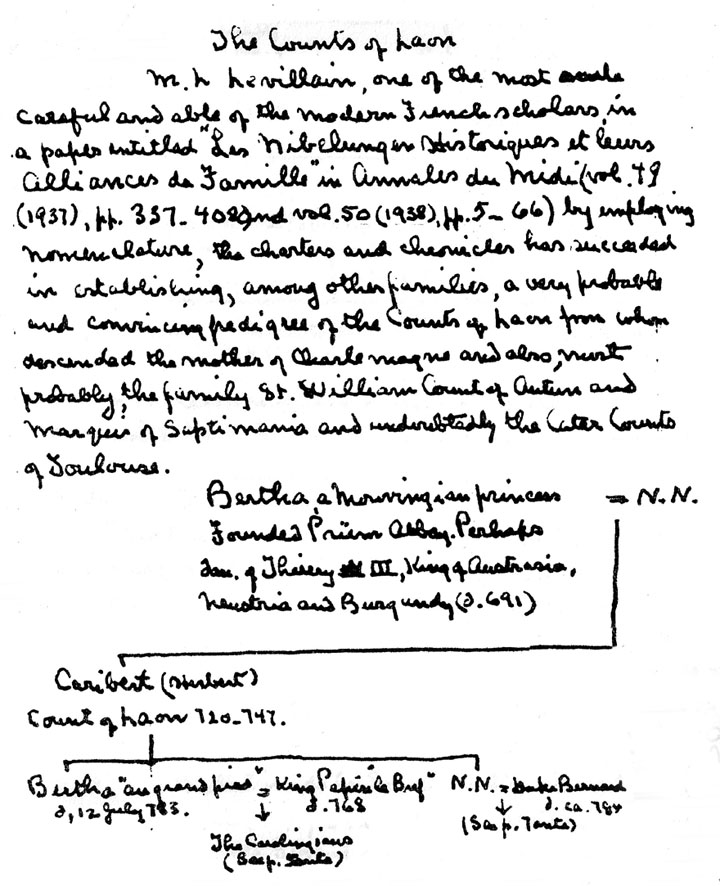Dagobert I to Charlemagne
Click to return to Pépin
the Short or Dagobert
I
It is very
difficult to prove with absolute certainly an exact line leading from the
Merovingians to anyone. Although the Merovingians were most certainly related
to each other, the exact nature of the relationships is open to some speculation.
A person generally believed to be a daugher or son could just as easily
be a niece or nephew.
However, it appears quite certain
that Bertha "Broadfoot", wife of King Pépin and mother of Charlemagne
was the granddaughter of a Merovingian princess who was perhaps a daughter
of Thierry (Theuderic) III who was in turn a grandson of Dagobert I (d.
639). We have the following from George Andrews Moriarty: The
Plantagenet Ancestry of King Edward III and Queen Philippa, page
232:
|
The Counts of Laon
M. L. Levillain, one of the most
careful and able of the modern French scholars, in a paper entitled "Les
Nibelungen Historiquies et leurs Alliances de Famille" in Annanles du Midi
(vol. 49, (1937), pp. 337 - 408) and vol. 50 (1938), pp. 5 - 66) by employing
nomenclature, the charters and chronicles has succeeded in establishing,
amond other families, a very probable and convincing pedigree of the Counts
of Laon from whom are descended the mother of Charlemagne and also, most
probably the family of St. William Count of Auture and Marquis of Septimania
and undoubtedly the later Counts of Toulouse.
Bertha, a Merovingian princess (husband unknown)
Founded Prüm Abbey. Perhaps
dau. of Thierry III, King of Austrasia,
Neustria and Burgundy (d. 691)
|

|
Caribert (Herbert)
Count of Laon 720 - 747
|

|
Bertha "au grand pied" m. King Pepin "le bref"
d. 12 July 783
d. 768
|

|
|
The Carolingians
|
|
The above passage was transcribed
from page 232 of G. A. Moriarty, The Plantagenet Ancestry of King
Edward III and Queen Philippa, Mormon Pioneer Genealogical Society,
Salt Lake City, 1985 and an image of this is shown next. This book seems
to be very rare and almost unobtainable. Professor Moriarty never published
his work, apparently because he felt it was never "finished". After his
death (circa 1960?) his manuscript was donated to the New England Historic
Genealogical Society in Boston. In 1985, The Mormon Pioneer Genealogical
Society produced a photographic reproduction of the original manuscript
in Professor Moriarty's own hand.
Click to return to Pépin
the Short or Dagobert
I
